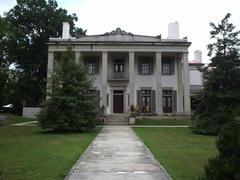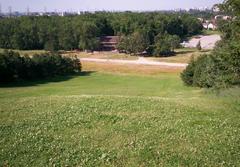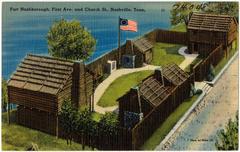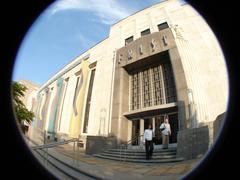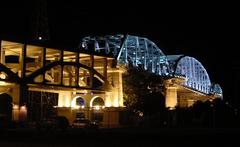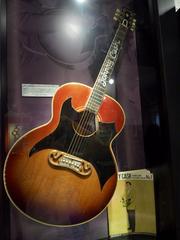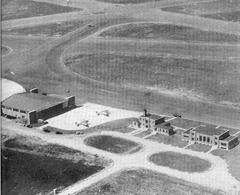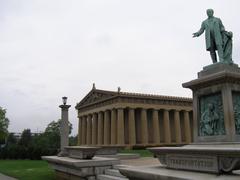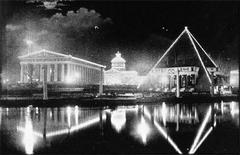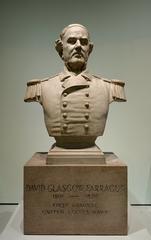
Mount Olivet Cemetery: Visiting Hours, Tickets, and Historical Significance in Nashville
Date: 03/07/2025
Introduction
Mount Olivet Cemetery, situated just east of downtown Nashville, is a landmark deeply interwoven with Tennessee’s history. Established in 1856 during the rural cemetery movement, its 206-acre expanse features winding paths, Victorian monuments, and a tranquil, park-like atmosphere. Modeled after Mount Auburn Cemetery in Massachusetts, Mount Olivet’s garden-style layout and funerary art make it both a place of remembrance and a living outdoor museum. The cemetery serves as the final resting place for many of Tennessee’s most influential figures—including governors, Civil War soldiers, musicians, and social reformers—reflecting the state’s complex cultural, political, and social evolution.
Visitors can explore the grounds daily, free of charge, and choose between self-guided and occasional guided tours for deeper insights. The site offers rich educational resources, architectural wonders, and opportunities to reflect on Nashville’s past. This guide provides detailed information on visiting hours, ticketing, accessibility, historical highlights, and practical tips, ensuring a rewarding and respectful visit. For the latest details, consult the official Mount Olivet Cemetery website and additional resources such as Find a Grave, the Nashville Public Library, and local history blogs.
Table of Contents
- Introduction
- Visiting Hours and Admission
- Tickets and Guided Tours
- Accessibility
- Directions and Getting There
- Nearby Attractions
- Cemetery Etiquette and Safety
- Historical Overview
- Visitor Amenities and Services
- Practical Tips for Your Visit
- Genealogy and Historical Research
- FAQs
- Conclusion
- References
Visiting Hours and Admission
Hours:
- Typically open daily from 8:00 AM to 6:00 PM (hours may vary seasonally; check ahead)
- The cemetery is open to the public for self-guided exploration during daylight hours.
Admission:
- Free entry for all visitors
- Donations are welcomed to support preservation
(Mount Olivet Cemetery Nashville: Visiting Hours, Tickets, and Historical Insights)
Tickets and Guided Tours
- General Visitation: No tickets required for entry.
- Guided Tours: Occasional themed tours are offered and may require advance booking and a nominal fee. Check the official website or contact the office for current schedules.
- Self-Guided Options: Visitors can use printed or digital maps, or resources like Find a Grave for independent exploration.
Accessibility
- Paved roads and pathways accommodate most visitors, although some historic sections may have uneven or unpaved surfaces.
- Wheelchair access is available in main areas; contact the office in advance to discuss specific needs.
- Benches and shaded spots are provided for rest.
Directions and Getting There
Address:
1601 Lebanon Pike, Nashville, TN 37210 (occasionally listed as 1100 or 1101 Lebanon Pike)
- By Car: Ample parking available onsite.
- Public Transit: Several bus routes serve the surrounding area, with short walks from stops to the entrance.
- Nearby: Adjacent to Calvary Cemetery, with both sites offering insights into Nashville’s burial traditions.
(Visit Music City: Mount Olivet Cemetery)
Nearby Attractions
- The Parthenon in Centennial Park
- Tennessee State Capitol
- Belle Meade Historic Site & Winery
- Downtown Nashville’s Music Row
- Calvary Cemetery: Directly adjacent, offering a complementary historical perspective.
Cemetery Etiquette and Safety
- Remain respectful: keep noise low, avoid disturbing services, and do not touch or lean on monuments.
- Follow posted rules regarding photography and drone use; photography is allowed but funerals and mourners should not be photographed.
- Stay on paths to protect graves and landscaping.
- The cemetery is safe during daylight hours; avoid after-hours visits and secure valuables.
Historical Overview
Founding and Development
Founded in 1856 by Adrian Van Sinderen Lindsley and John Buddeke, Mount Olivet was inspired by the garden-cemetery movement, aiming to create a space combining natural beauty and memorialization. Its design features winding lanes, mature trees, and a variety of funerary art styles, from Gothic Revival to Classical and Egyptian Revival.
(Nashville Public Library: Mount Olivet)
Antebellum and Civil War Era
Initially a White Protestant burial ground, Mount Olivet reflected antebellum social stratification, with sections for Nashville’s elite. The Civil War left a significant mark, with the creation of the Confederate Circle in 1869—a memorial to approximately 1,500 Confederate soldiers, arranged in concentric circles around an obelisk.
(Adventures in Cemetery Hopping)
Notable Interments and Monuments
Mount Olivet is home to graves of:
- Anne Dallas Dudley (suffragist)
- Adelicia Acklen (Belmont Mansion owner)
- William Brimage Bate (Civil War general and governor)
- Multiple governors, senators, and prominent musicians, including country music figures like Billy Byrd and Vern Gosdin.
- Monuments reflect Victorian symbolism (angels, obelisks, urns), and include distinctive structures such as the Vernon King Stevenson Mausoleum, modeled after Napoleon’s tomb.
Social Change and Segregation
Mount Olivet’s policies shifted over time. While some early burials included African Americans and Catholics, segregation became enforced after 1890 due to Jim Crow laws, limiting access for people of color. Sections for various fraternal organizations and social groups further illustrate the city’s evolving demographics.
(Tennessee State Library and Archives Blog)
Twentieth-Century Developments
By the mid-20th century, the cemetery expanded to 206 acres. Ownership changes in 1960 led to significant renovations. A World War I memorial plaque (1924) and regular public ceremonies underscore its ongoing role in civic memory. The historic Gothic Revival chapel (built 1872, designed by Hugh Cathcart Thompson) was destroyed by fire in 2015 but remains a poignant ruin.
(Adventures in Cemetery Hopping)
Visitor Amenities and Services
- Maps and Records: Available at the cemetery office and online.
- Restrooms: Limited facilities; plan ahead.
- Parking: Free and available onsite.
- Benches and shade: Scattered throughout for comfort.
- No café or gift shop: Dining and shopping are available nearby in downtown Nashville.
Practical Tips for Your Visit
- Wear comfortable walking shoes; terrain varies across the grounds.
- Bring water and sun protection, especially in warm months.
- Plan for restroom breaks before or after visiting.
- Use digital resources (Find a Grave, Wikipedia) to research interments and plan your route.
- Respect active funerals and ongoing maintenance work.
Genealogy and Historical Research
Mount Olivet is a valuable resource for genealogists and historians. Many older graves are unmarked or weathered, so arrive with as much information as possible. Online databases and cemetery staff can assist, but records—especially for marginalized groups—may be incomplete.
(Tennessee Virtual Archive (TeVA))
FAQs
Q: What are the visiting hours?
A: Typically 8:00 AM to 6:00 PM daily, subject to seasonal adjustments.
Q: Is there an admission fee?
A: No, entry is free; donations for preservation are accepted.
Q: Are guided tours available?
A: Occasional themed tours are offered; self-guided tours are always available.
Q: Is the cemetery accessible for wheelchairs?
A: Main areas are accessible; some older sections may be challenging. Contact the office for details.
Q: Can I take photographs?
A: Yes, but be respectful of funerals and privacy. Drones are not permitted.
Q: Is parking available?
A: Yes, free on-site parking is provided.
Conclusion
Mount Olivet Cemetery stands as a vital testament to Nashville’s multifaceted history, blending art, architecture, and landscapes with stories of Tennessee’s most influential figures. Its grounds invite reflection, exploration, and learning—whether you’re a tourist, historian, or local resident. By respecting the site and supporting preservation, visitors help ensure that Mount Olivet remains a cherished landmark for generations to come. For further information, plan your visit using the official website, and consider downloading the Audiala app for curated audio tours and deeper engagement with Nashville’s heritage.
References and Official Sources
- Mount Olivet Cemetery Nashville: Visiting Hours, Tickets, and Historical Insights
- Mount Olivet Cemetery - Nashville Historical Sites
- Find a Grave: Mount Olivet Cemetery
- Adventures in Cemetery Hopping: Visiting Mount Olivet Cemetery
- Nashville Public Library: Mount Olivet
- Tennessee State Library and Archives Blog: Mount Olivet Cemetery Records
- Tennessee Virtual Archive (TeVA)
- Tennessee Vacation: Mount Olivet Cemetery



